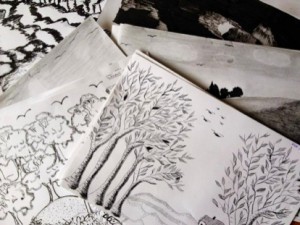
Cristian Mogrovejo, 2004-2006, Ecuador (left), and Rodrigo Muñoz receiving funding for the Stories of Imprisoned Women project from the U.S. Embassy in Ecuador
It has been almost a decade since I completed my Master of Fine Arts in Industrial Design at the Rochester Institute of Technology as a Fulbright Student from Ecuador, but the lessons I learned from that time are still professionally and personally valuable to me to this day. Ever since that life-changing experience, I have become increasingly aware of my responsibility to society and to efforts to promote positive change. One way in which I have been able to promote change at home, is as a design instructor at the Universidad San Francisco de Quito, where I encourage students to think about their work in terms of ideas and solutions to current social issues.
One day, one of my former students, Rodrigo Muñoz (currently pursuing an MFA in Design for Social Innovation at the School of Visual Arts in New York City), a colleague and good friend, shared his idea about working together to help address the issue of the living conditions of imprisoned Ecuadorian women. From that day forward, our project was born; we called it: Stories of Imprisoned Women: Literature and Art as Exercises in Empowerment, Rights and Identity.
Creating adequate living conditions for women in Ecuadorian correctional facilities and prisons has always represented a complex challenge. This challenge can be material, psychological and/or emotional. Even though the government has made improvements to prisons with its policies, laws, and facilities, we think there is still much work to be done by society as a whole. We believe that the complex problem of poor living conditions in prisons and correctional facilities has to do not only with pragmatic, logistic and physiological factors, which can be addressed by increased investment in buildings and services, but also with the psychological and emotional stability of inmates by providing them with channels for enhanced self-expression.
Art, literature and design can offer valuable opportunities for inmates to express themselves and make positive use of their time. We wanted to create an environment that would allow women to have another way to communicate and reflect. We offered courses on creative writing and basic visual art techniques; for the final project, they wrote a short story, testimonial or fiction piece, and illustrated it. Currently, we are working on publishing their work.
We hope we have contributed to improving modes of real rehabilitation and re-entry for former inmates into society. In the process, we have benefited a great deal from the experience. I have broadened my view of the world and renewed my sense of social responsibility. This sense of being part of the world, and the responsibility that comes with it, is one of the most valuable things I will always owe to the Fulbright Program, and will always be thankful for.


No Comments